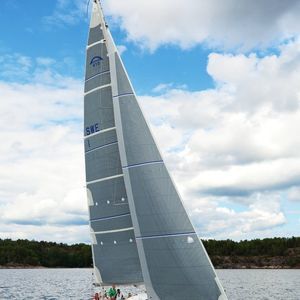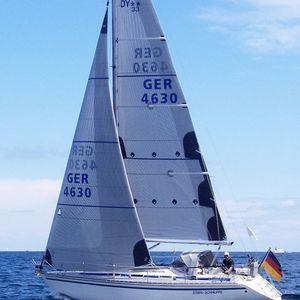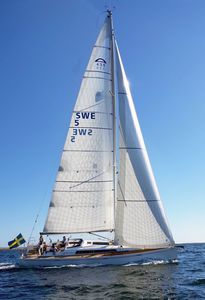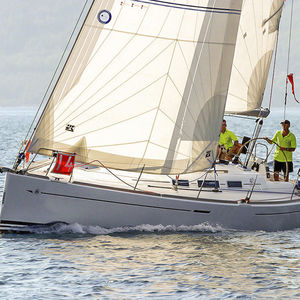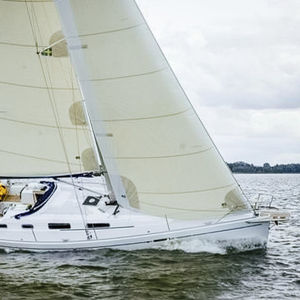
- Sailing
- Sailing Equipment and Gear
- Genoa
- UK-Halsey International
Genoa for cruising sailboatsradial cutpolyester
Add to favorites
Compare this product
Characteristics
- Type
- genoa
- Applications
- for cruising sailboats
- Cut
- radial cut
- Material
- polyester
Description
Radial sails made with polyester laminates are a good choice for cruising sailors who need durability, yet who still appreciate the performance of sails that hold their shape better than traditional cross-cut dacron sails.
The polyester yarns used in radial sails have much more strength in the warp direction (the warp direction is parallel to the length of the roll – See diagrams 1&2). In order to more precisely match the warp-oriented cloth with the loads in the sail, gores need to be very narrow. This allows UK Sailmakers to use a lighter weight cloth with the same strength.
Radial sails (with their many panels) allow sailmakers to use more than one laminated fabric in a sail. Stronger laminates can be used in high load areas like the leech and tack, while lighter cloth can be used in the less loaded luff of the sail. A third fabric, one that is heavy-duty and chafe-resistant, can be used in the foot panels to stand up to the abuses of tacking and chafing on the life lines. By mixing cloth types, sailmakers can make a lighter sail that has more strength where needed.
Cruising laminates come with one or both sides covered with finely woven polyester taffeta, which improves chafe resistance.
Diagram 2: Radially paneled sails use "warp-oriented" cloth where the strongest yarns run the length of the narrow panels as shown by the thin grey lines. For clarity, the diagram only shows thread lines of the panels in the back half of the sail.
Close-ups of Dimension Polyant's polyester cruising laminates, which include strong warp-oriented polyester yarns and X-Ply yarns laminated between two layers of Mylar and a Taffeta covering one side of the laminate.
Catalogs
No catalogs are available for this product.
See all of UK-Halsey International‘s catalogs*Prices are pre-tax. They exclude delivery charges and customs duties and do not include additional charges for installation or activation options. Prices are indicative only and may vary by country, with changes to the cost of raw materials and exchange rates.


